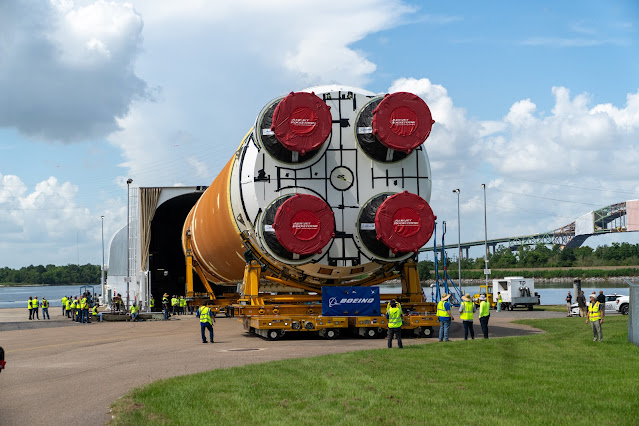Shenzhou-18 Astronauts: Second Spacewalk Photos | China Space Station

The Shenzhou-18 astronauts aboard China's orbiting space station completed their second spacewalk on Wednesday, July 4, 2024, according to the China Manned Space Agency (CMSA).
Ye Guangfu, Li Cong, and Li Guangsu worked for about 6.5 hours to accomplish multiple tasks with Li Guangsu remaining inside the space station.
With the assistance of the space station's robotic arm and researchers on Earth, they installed space debris protection devices for the pipelines, as well as cables and key equipment outside the Tiangong space station, and conducted an extravehicular inspection.
"The main purpose of the spacewalk this time is to install protection devices for extravehicular equipment, mainly cables and pipelines, so as to improve the space station's ability to operate safely and steadily over the long term," said Liu Ming, an engineer with the China Aerospace Science and Technology Corporation (CASC).
After installing protection devices, Li Cong mounted the robotic arm and conducted an extravehicular inspection of the space station's facilities through his helmet camera.
After completing the predetermined tasks, Ye Guangfu and Li Cong returned safely to the Wentian lab module.
"The Chinese space station is very beautiful. Whenever the robotic arm moves to the highest point, I can't help taking more glances at the space station despite the glaring sunlight. I really feel the greatness of the project from my heart, and I applaud all the space professionals and our motherland. We will make continuous efforts to successfully and efficiently complete the follow-up tasks to the end. Let's meet again inside the cabin," Li Cong said outside the space station.
In their previous spacewalk on May 28, the Shenzhou-18 trio mainly installed protection devices for the extravehicular cables of the Mengtian lab module.
The Shenzhou-18 crew, sent to the space on April 25 this year, have completed one third of their space journey and are scheduled to carry out a large amount of in-orbit scientific experiments and technological tests, the agency said.
Shenzhou-18 Crew:
Ye Guangfu (叶光富, commander)
Li Cong (李聪, mission specialist)
Li Guangsu (李广苏, mission specialist)
Image Credit: CMSA
Release Date: July 16, 2024
#NASA #Space #Science #Earth #China #中国 #Shenzhou18 #神舟十八 #EVA #Spacewalks #ScientificExperiments #Taikonauts #Astronauts #YeGuangfu #LiCong #LiGuangsu #CSS #ChinaSpaceStation #中国空间站 #TiangongSpaceStation #SpaceLaboratory #CASC #CMSA #国家航天局 #HumanSpaceflight #STEM #Education
APoD.jpg)
















.webp)



















